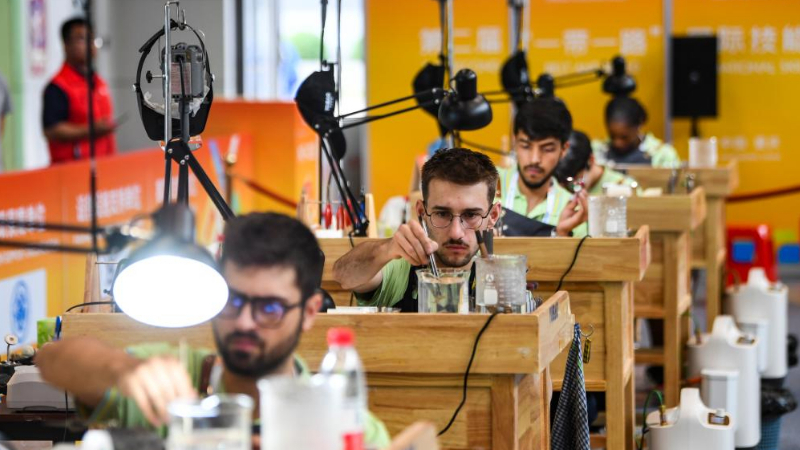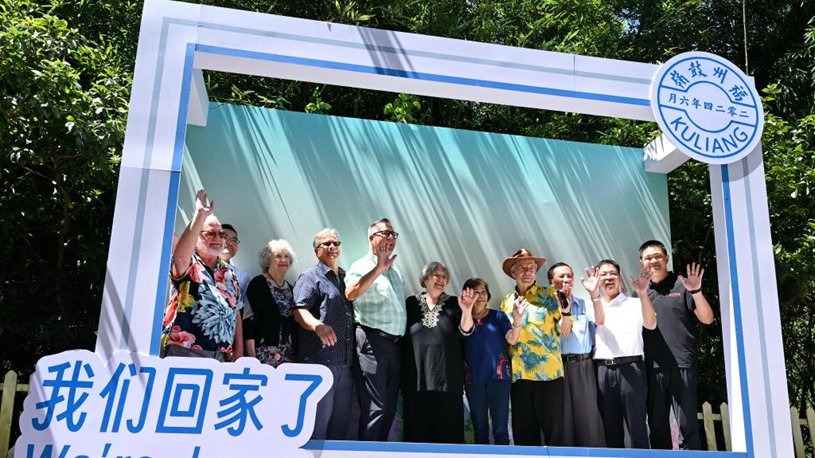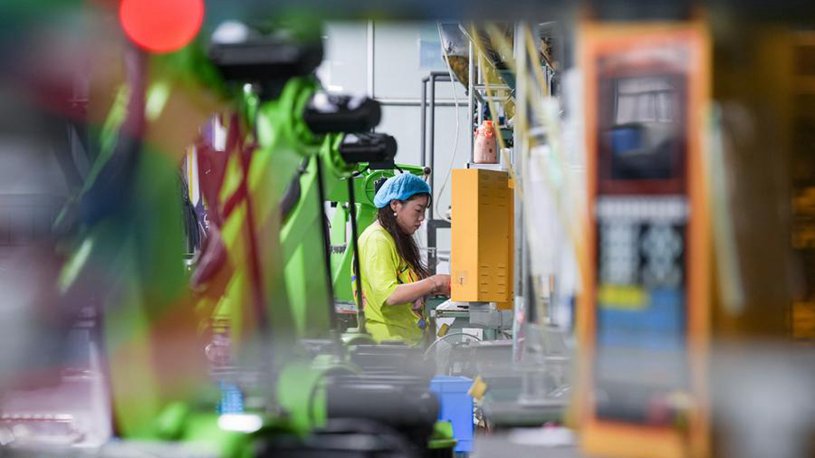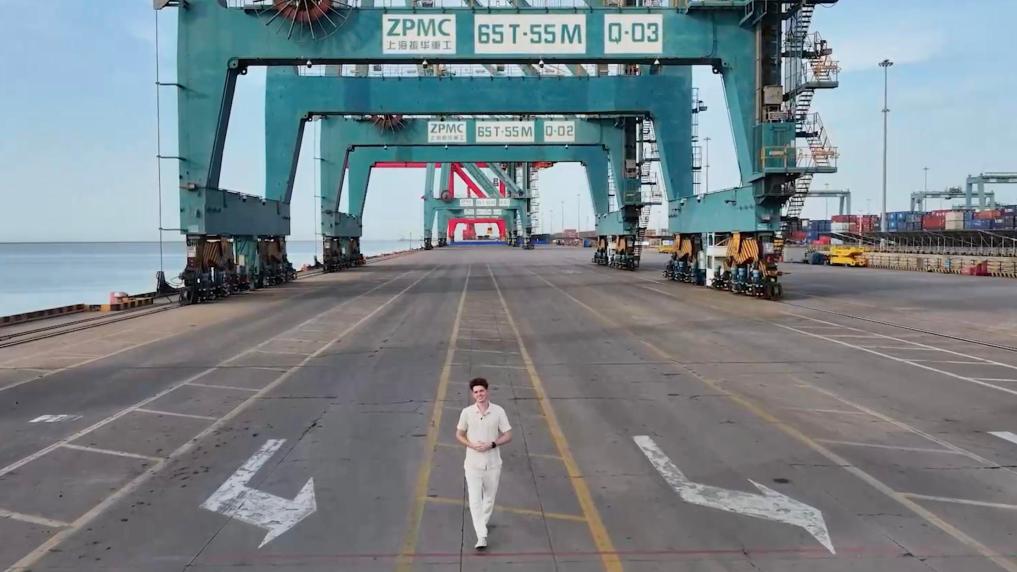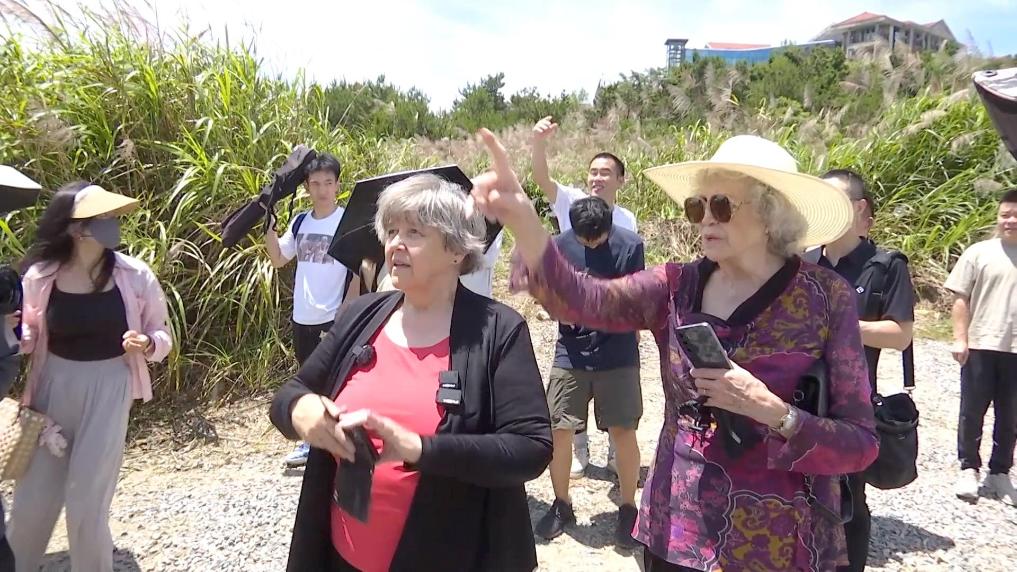BEIJING, June 25 (Xinhua) -- The returner of the Chang'e-6 probe touched down on Earth on Tuesday, bringing back the world's first samples collected from the moon's far side, and marking another remarkable achievement in China's space exploration endeavors.
The return capsule landed precisely in the designated area in Siziwang Banner, north China's Inner Mongolia Autonomous Region at 2:07 p.m. (Beijing Time), operating normally, and the mission is a complete success, according to the China National Space Administration (CNSA).
Under ground control, the returner separated from the orbiter approximately 5,000 km above the South Atlantic.
The capsule entered the Earth's atmosphere at about 1:41 p.m. at an altitude of about 120 km and a speed of nearly 11.2 km per second.
After aerodynamic deceleration, it skipped out of the atmosphere and then began to glide downwards, before re-entering the atmosphere and decelerating for a second time.
At around 10 km above the ground, a parachute opened, and the returner later landed precisely and smoothly in the predetermined area, where it was recovered by a search team.
The returner is set to be airlifted to Beijing for opening, and the lunar samples will be transferred to a team of scientists for subsequent storage, analysis and study, said the CNSA.
Chang'e-6 is one of the most complex and challenging missions in China's space exploration efforts to date. Consisting of an orbiter, a returner, a lander and an ascender, it was launched on May 3 this year, and has gone through various stages such as Earth-moon transfer, near-moon braking, lunar orbiting and separation of the lander-ascender combination and the orbiter-returner combination.
Supported by the Queqiao-2 relay satellite, the lander-ascender combination landed at the designated landing area in the South Pole-Aitken (SPA) Basin on the far side of the moon on June 2 and carried out sampling work.
On June 4, the ascender took off from the moon with samples and entered the lunar orbit. On June 6, it completed rendezvous and docking with the orbiter-returner combination and transferred samples to the returner. The ascender then separated from the combination and landed on the moon under ground control to avoid becoming space junk.
The orbiter-returner combination spent 13 days in lunar orbit, awaiting the right opportunity to return to Earth. After completing two moon-Earth transfer maneuvers and one orbital correction, the returner separated from the orbiter and delivered the samples to Earth.
Following its contribution to the Chang'e-6 mission, the Queqiao-2 relay satellite will choose appropriate times to carry out scientific detection work. Its payloads, including an extreme ultraviolet camera, an array neutral atom imager and an Earth-moon very long baseline interferometry experiment system, will collect scientific data from the moon and deep space.
"The Chang'e-6 mission represents a significant milestone in the history of human lunar exploration, and it will contribute to a more comprehensive understanding of lunar evolution," said Yang Wei, a researcher at the Institute of Geology and Geophysics of the Chinese Academy of Sciences.
"New samples will inevitably lead to new discoveries. Fascination with the moon is rooted in Chinese culture down the ages, as evidenced by the mythological narrative of Chang'e, a lady who journeyed to and resided on the moon. Now, Chinese scientists are eagerly anticipating the opportunity to contribute to lunar science," Yang added.
Lunar samples brought by the earlier Chang'e-5 mission have already drawn applications for access from international scholars, with the process well underway. The Chang'e-6 lunar probe carried four international payloads that were developed jointly by Chinese and foreign scientists. It is conceivable that the openness of Chinese lunar exploration activities will be mirrored in the study of Chang'e-6 lunar samples, said Yang.
The lunar scientific community and the entire humankind are anticipated to reap the rewards of collaborative efforts undertaken by international scientists from a wide range of geographical and disciplinary backgrounds, Yang added. ■

